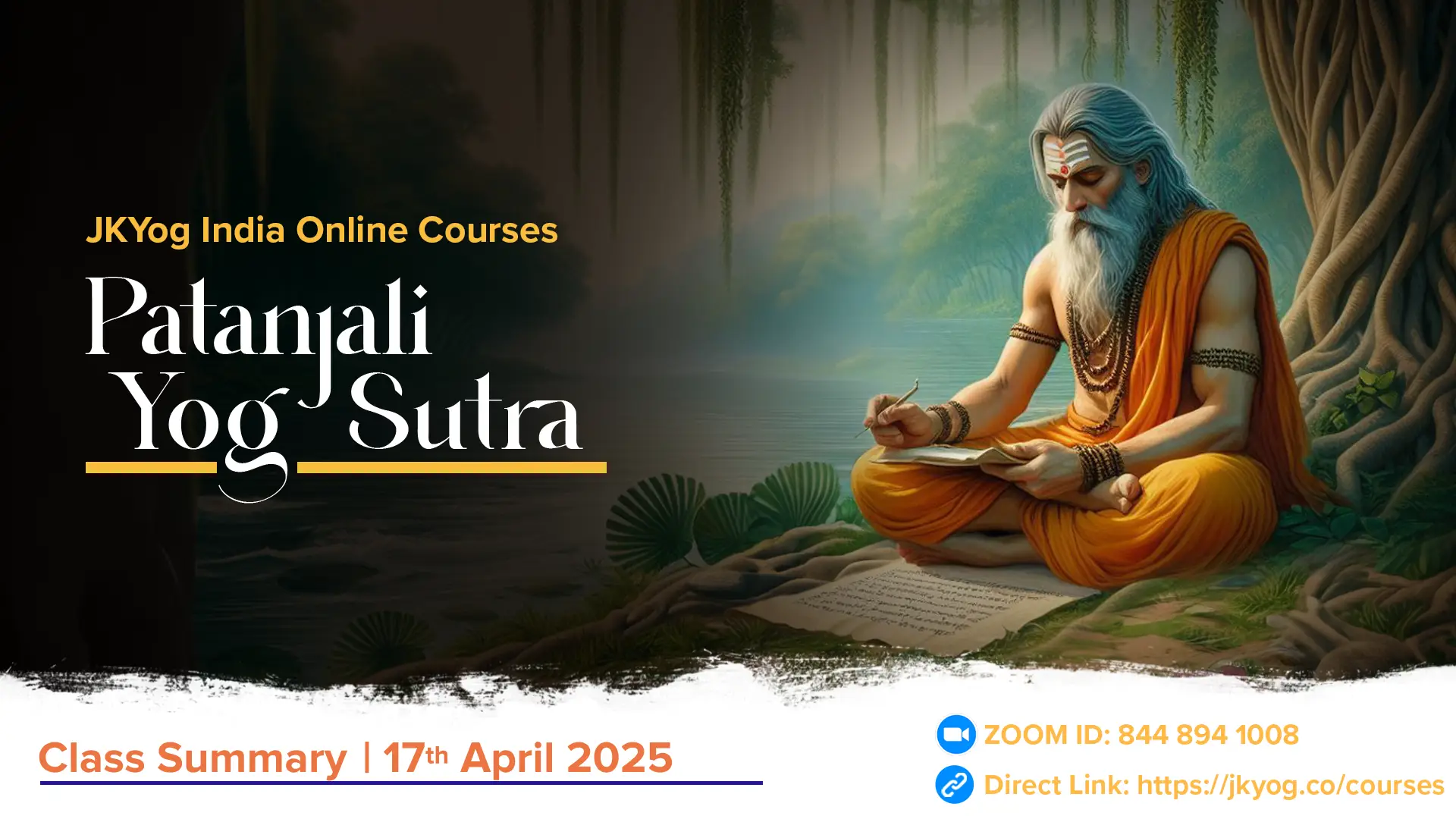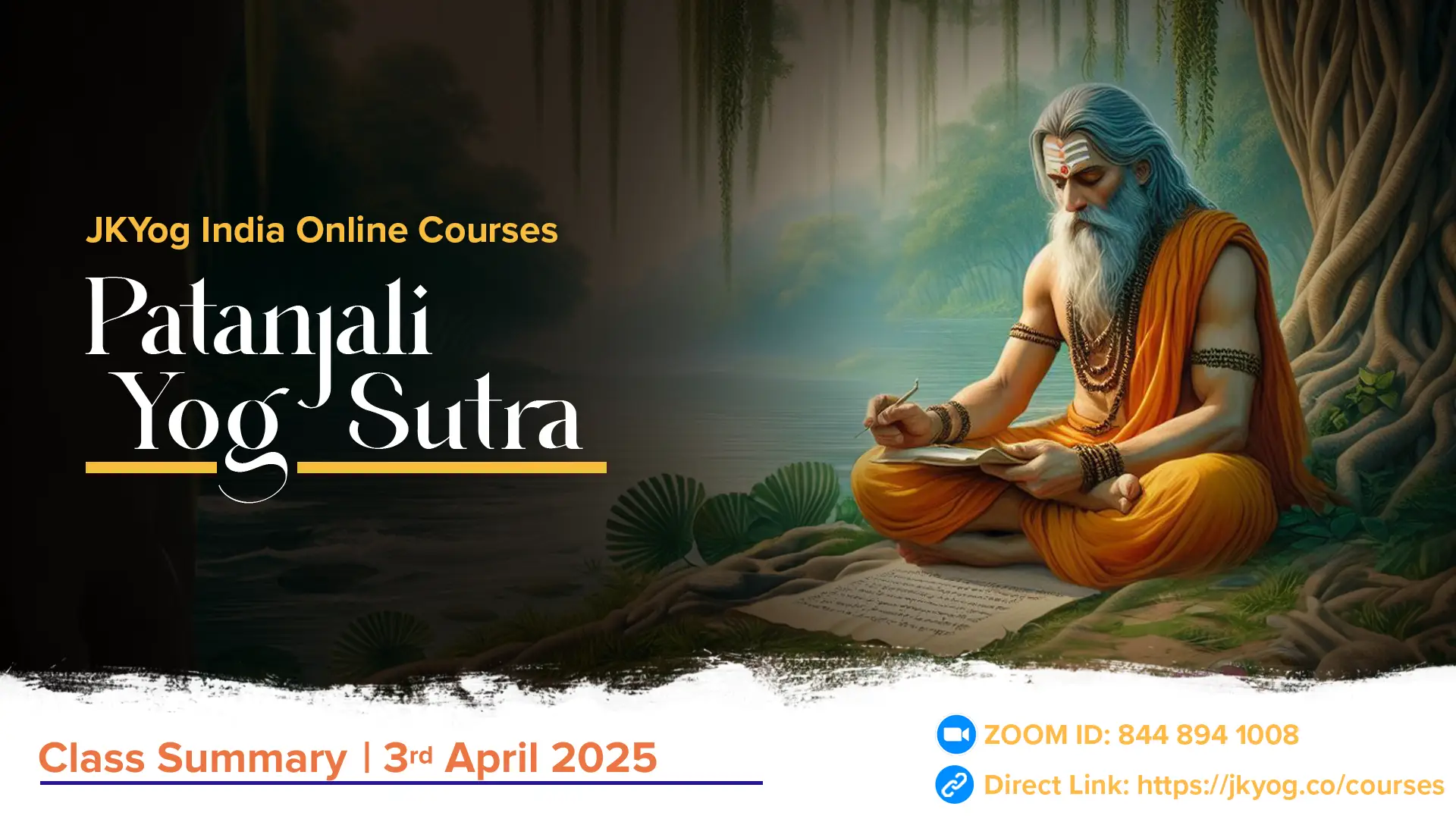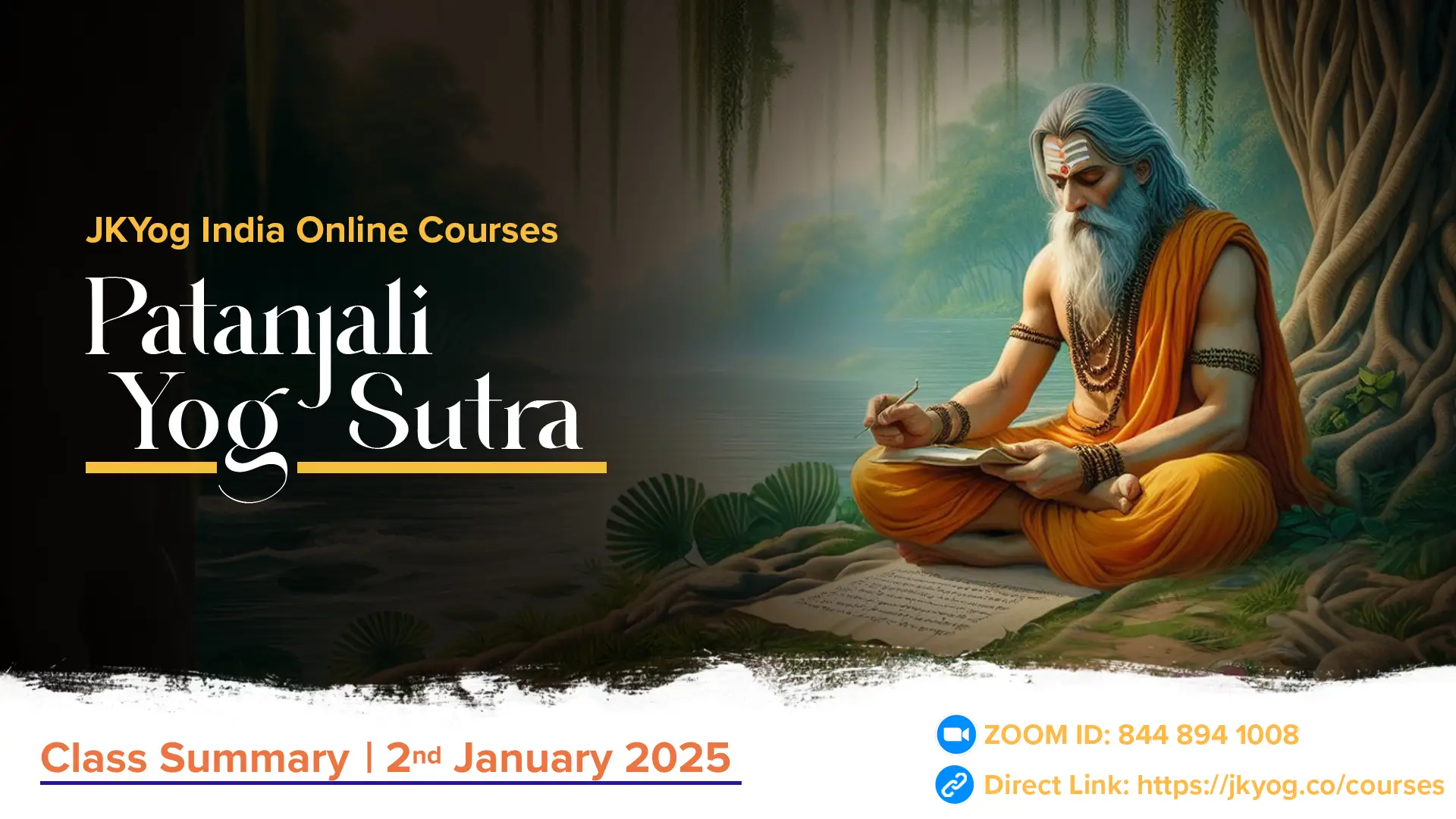तस्मिन्सति श्वासप्रश्वासयोर्गतिविच्छेदः प्राणायामः || 2.49 ||
Tasmin sati śvāsa praśvāsayor gati vicchedaḥ prāṇāyāmaḥ || 2.49 ||
Translation: When it is done (after the completion of the āsanas), controlling the inhalation and the exhalation is prāṇāyāma.
Benefits of praṇāyāma
There are a number of benefits of practising the praṇāyāma and other yogic practices. Some of them may be listed below.
1. Prāṇāyāma supports a healthy lifestyle
- Prāṇāyāma helps one to regulate one’s eating styles. One cannot and should not do breathing exercises after a heavy meal. A regular breathing exercise helps one to burn calories and enhance the digestive system.
- Eating habits are connected to the emotional content of the mind. The Bhagavad Gītā also refers to it (6.17). The sāttvic type of food that is prescribed helps one to move forward in the spiritual path. In short, Prāṇāyāma as well as good eating habits form a healthy lifestyle.
2. Better Concentration
Prāṇāyāma helps one to concentrate better on all activities in the day to day life, as well as the spiritual activities. “Studies have found that regular prāṇāyāma and yoga practice improves coordination, reaction time, memory, and even IQ scores. People who practice Transcendental Meditation demonstrate the ability to solve problems and acquire and recall information better—probably because they're less distracted by their thoughts, which can play over and over like an endless tape loop.”
3. Relaxes the system
“Yoga encourages you to relax, slow your breath, and focus on the present, shifting the balance from the sympathetic nervous system (or the fight-or-flight response) to the parasympathetic nervous system. The latter is calming and restorative; it lowers breathing and heart rates, decreases blood pressure, and increases blood flow to the intestines and reproductive organs.
4. Protecting the nervous system
Some advanced yogīs can control their bodies in extraordinary ways, many of which are mediated by the nervous system. Scientists have monitored yogīs who could induce unusual heart rhythms, generate specific brain-wave patterns, and, using a meditation technique, raise the temperature of their hands by 15 degrees Fahrenheit.
5. Reduces tension
Reducing the tension in the mind
Man is what the mind is. Man is controlled by thought processes. Conflicting thoughts create tension in the mind. If the mind is tense it is reflected in the limbs also. The hand begins to tremble, speech does not come out in the intended manner and the entire coordination suffers. Prāṇāyāma calms the mind and reduces the tension. One feels completely relaxed.
6. Sleeping problems get solved
A lot of people in the world suffer from loss of sleep. Doctors prescribe sleeping tablets but it is not a cure. It is only a temporary relief. If a person is addicted to the habit then it complicates the entire system. Regular prāṇāyāma helps one to calm the mind and consequently one gets a good sleep as well.
7. Boosts your immune system functionality
Āsana and prāṇāyāma probably improve immune function, but, so far, meditation has the strongest scientific support in this area. It appears to have a beneficial effect on the functioning of the immune system, boosting it when needed (for example, raising antibody levels in response to a vaccine) and lowering it when needed (for instance, mitigating an inappropriately aggressive immune function in an autoimmune disease like psoriasis).
8. Gives your lungs room to breathe
Yogīs tend to take fewer breaths of greater volume, which is both calming and more efficient. A 1998 study published in The Lancet taught a yogīc technique known as "complete breathing" to people with lung problems due to congestive heart failure. After one month, their average respiratory rate decreased from 13.4 breaths per minute to 7.6. Meanwhile, their exercise capacity increased significantly, as did the oxygen saturation of their blood.
Prāṇāyāma also promotes breathing through the nose, which filters the air, warms it (cold, dry air is more likely to trigger an asthma attack in people who are sensitive), and humidifies it, removing pollen and dirt and other things you'd rather not take into your lungs.
Hanumān is actually energy personified
One of the most loveable characters in the Rāmāyaṇa is Hanumān. He is so dear to us because he lives within us in the form of prāṇa. How so? The whole earth is covered by air. That large air is Vāyu, the Wind God. The smaller air that remains within us is the son of the Wind God, Hanumān. The prāṇa cannot be extinguished just as Hanumān cannot be killed. He is a cirañjīvin, one who lives forever. Hanumān is actually energy personified.
Hanuman represents prāṇa
Now, when Hanumān connected to his life mission as the chief servant of Shree Rām, he also becomes the symbol of one-pointedness and potential power which are the foundations of pure devotion and accomplishment in yoga. His crossing the ocean symbolically says that filled with prāṇa, we should try to cross the ocean of worldly life.
Higher levels of awareness.
With this kind of devotion, we can move mountains and overcome any obstacle that comes in the way of our mission. It is also a lesson for us that devotion to God can take us to great heights. When our prāṇa is balanced and we are connected to our mission in life, we will find great power within ourselves. People who practice prāṇāyāma often describe a decrease in the amount of sleep they need, an increase in energy and efficiency, a feeling of well-being and connectivity with their intuition and higher levels of awareness.
In the same way, the practice of worshipping Hanumānji gives tremendous power both physically and spiritually. This power is made available because by worshipping Hanumān we are actually worshipping and invoking our own energy, our own śakti.
Hanumānji is nothing but our own prāṇa and prāṇa is nothing but the aspect of God that gives life and moves everything around us. By inviting Hanumānji into our yoga practice, and into our hearts, we are inviting our ability to direct and connect our individual energy with the supreme energy.
Summary: JKYog India Online Class- Patanjali Yog Sutra [English]- 12.09.2024








